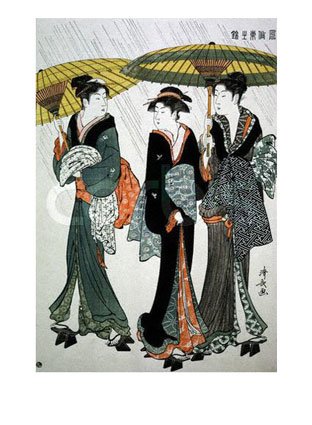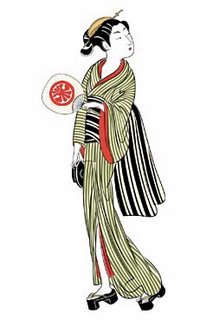Japanese Ukiyo-e Printmakers Suzuki Harunobu (1724-70),( see his image to the right) Torii Kiyonaga (1752-1815) (see his artowrk to the left) did establish the system of beautiful proportions for women.

acording to this article form this site "Harunobu, ... depicted women as dolls in a world of fantasy. Kiyonaga's beauties were rendered with a special system of proportion known as hattoshin -- the subject's body being divided into eight parts. Kiyonaga was particularly regarded for the realism of his background scenes. Utamaro concentrated on half-length and bust portraits, and was noted for outlining the features of the face which, with decoratively designed hair and gorgeously lavish robes, created a sweeping composition, as well as for the emphasis he gave to facial expression, although casual"

Acording to the autor of the article " western viewers may find it difficult at times to discern variation." However, approximately in the same time The British statesman and philosopher, Edmund Burke (1729–1797). wrote in his essay "On the Sublime and Beautiful"
Some hold it to be seven heads; some make it eight; whilst others extend it even to ten; a vast difference in such a small number of divisions! Others take other methods of estimating the proportions, and all with equal success. But are these proportions exactly the same in all handsome men? or are they at all the proportions found in beautiful women?
(read the full text )
May be Japanese and Western sense of human body proportions was identical in the same period of time?